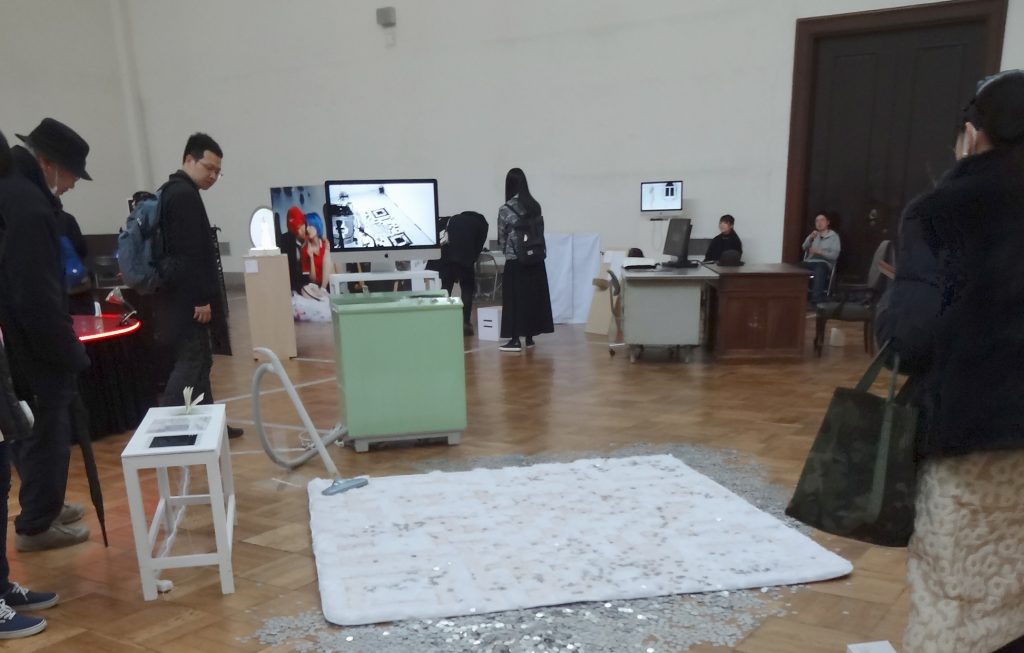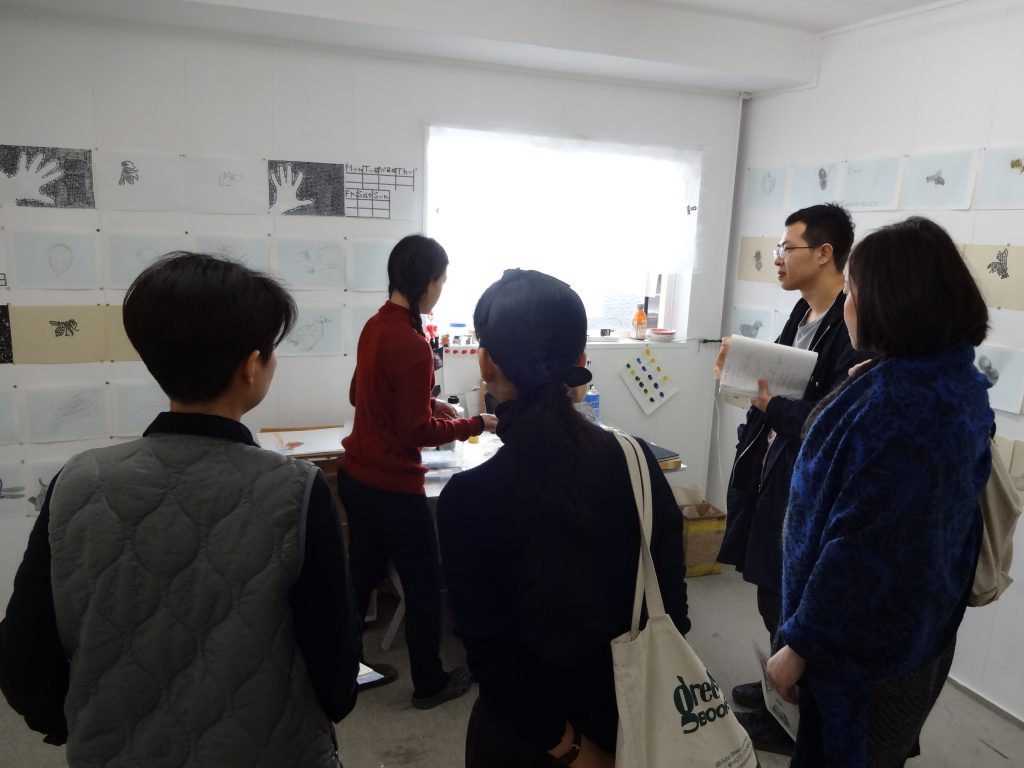キャリアデザインセンターでは、2015年から、京都市立芸術大学作品展の会期に合わせ、「リサーチャー招聘プロジェクト」を行っています。
《招聘者のレポートvol.3》
Jaeyong Park/キュレーター(Work on Work / 韓国)
「交流」する意味とは?
今回、京都での招聘プロジェクトに参加できたことは、光栄かつワクワクする経験だったと同時に、かなりの試練でもありました。キュレーター・コレクティブであるWork on Workのメンバーとして、京都市立芸術大学の谷澤紗和子さんにお声掛け頂き、Work on Workのもう一人のメンバーであるHyejin Jangと京都へとやってきました。

プロジェクトに参加できることへの高揚感は、来日後、そう長くは続きませんでした。というのも、京都の美術や文化に関して、私たちがあまりにも無知であることに気が付いたからです。事前に知り得た情報は、あくまで旅行者の目線で発せられたものばかりだったのです。そこから「京都で出会うアーティストたちと一緒に、または、彼らのために私たちができることは何か?」を本気で考え始めました。残念ながら、滞在期間中に自分たちの役割を見出すことは難しかったです。

京都に到着すると、日本国内から招聘された参加者と合流し、アーティストたちのアトリエをかなり精力的に見て回りました。海外のキュレーターにとって、こうしたアトリエ訪問を個人的に行うのは容易ではないので、大変貴重な経験になりました。京都のアートシーンのコアな部分に触れる機会を頂いたと思います。残念だったのは、目の前で起きていることを理解しようと精一杯努力したつもりですが、与えられた情報を充分に消化しきれなかったことです。総じて、今回の滞在はとても短かったと思います。実際、よりよく京都を理解し、プログラムについて考察するために、私たちは招聘期間以降も自費で滞在を延長することにしました。
そんな中、はたして「交流するとはどういうことか?」という疑問が生まれてきました。正直に申し上げると、本質的な交流には時間とリソースが必要だと思います。招聘される側は、訪問する場所やそこで暮らし働く人々について考えを巡らし、彼らとの対話を様々な形で継続していくことが重要だと思うのです。それ以外に近道はないと思います。プログラムを通して交流されるべきは、参加者たちの連綿と続く思考だと思うからです。今回、京都で出会うことができた皆さんも、似たような思いでいてくれたらいいなと思います。もしそうであれば、さらなる交流やコラボレーション、または、他の何かが生まれるかもしれません。
翻訳:板井 由紀
How Can Anyone Exchange?
The occasion of being invited to the city of Kyoto was prestigious and entertaining yet very challenging. As a member of a curatorial collective Work on Work, I was first invited by Sawako Tanizawa-san at the Kyoto University of Arts. I visited Kyoto with another curator colleague of the collective, Hyejin Jang.
Yet, the excitement of being invited did not continue so long. Indeed, we realized we had not so much idea about Kyoto when it comes to visual art and culture in general. What we could find out was information through the perspective of travelers. Then the question began: What can we do in Kyoto, with / for the artists we would meet? It was not so easy for us to expect what role we will play while we stay in the city.
In Kyoto, we were joined by other colleagues from other cities in Japan. What happened afterwards was a very intensive tour to artists’ studios, which was a very intriguing experience. (It was because one cannot do such visits to artists’ studios, especially as someone from the outside) It felt as if both of us were provided with special tickets to take an intimate look inside Kyoto’s art scene. One regret is that we were not able to fully grasp what we were provided even though we tried our best to open our eyes and see everything we could see. All in all, the visit to Kyoto was very, very short. Indeed the two of Work on Work’s members decided to spend a few more days in Kyoto after the invited period to see and experience the city, hoping for another occasion where we will able to have time for deeper reflection and conversations.
Now, all these lead to a final question. How can anyone exchange? To be perfectly blunt and honest, to exchange means to invest time and resource. To exchange means that one takes time to think about the places he or she visits, think about people that live and work there, and continue the conversation with them in different ways. There is no way around it. There is no shortcut. The only thing every one of us needs to exchange is the longevity of our thinking. I hope I continue to think this way, and those I met in Kyoto also think the same (or similar) way I do. This will lead to another contact, collaboration, or something else in the coming days.
Jaeyong Park
work on work
http://www.workonwork.org


